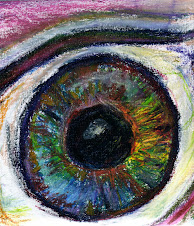Did you put on a pair of 3-D glasses to watch the special Super Bowl commercials yesterday? At least 4% of you probably did not notice any difference in the picture after you put on the glasses. This is the percentage of the American population that has a strabismus or an eye-turn. Even more people have difficulty teaming their eyes together whose conditions may involve a convergence insufficiency, convergency excess, or other problem that involves binocular function and would also have found the commercials less impressive than they had been led to believe. Other people probably were able to appreciate the added depth and detail in the commercials with the 3-D glasses at first, but then their eyes began to hurt or the special effects seemed to fade away. Still others, who have amblyopia, commonly called a lazy eye, tend to suppress the information gathered by the weaker eye, so they would also have had difficulty using the 3-D glasses.
3-D glasses work by providing the right eye with different visual information than the left eye so that a more complex image will be perceived when the two pictures are combined in the retina. ( See http://www.3dglassesonline.com/how-do-3d-glasses-work/ for a discussion of how 3-D glasses work.) For them to work requires that the individual has good binocular vision. Strabismus, eye teaming disorders, and amblyopia all correlate with reduced or absent binocularity. People who have these conditions usually have difficulty with depth perception. Some of these conditions also impair the individual's ability to read efficiently because, with a convergence insufficiency, for instance, the words may seem to be unstable on the page. They may also get headaches or report seeing double when they read.
Fortunately, with appropriate diagosis and vision therapy, these conditions can be helped. New research demonstrates that convergence insufficiencies can be addressed with a program of in-office vision therapy. Children who have been diagnosed with other binocular disfunctions have the best prognoses but even adults can be assisted to gain ground as has been demonstrated by the experience of Sue Barry, dubbed "Stereo Sue". (See ttp://www.newyorker.com/archive/2006/06/19/060619fa_fact_sacks for her story.)
What is my point? If you or someone at your Super Bowl party was unimpressed by the 3-D glasses because they didn't seem to change anything about the picture, or if anyone found wearing the glasses uncomfortable or intolerable, it probably means that they need to schedule a comprehensive eye exam with a developmental optometrist who specializes in binocular vision and who also is a vision therapy provider. Then, if there is a diagnosis that can be helped by vision therapy, know that the benefit of seeing in stereo is worth the investment of time, money, frustration, and effort.
Subscribe to:
Post Comments (Atom)





No comments:
Post a Comment